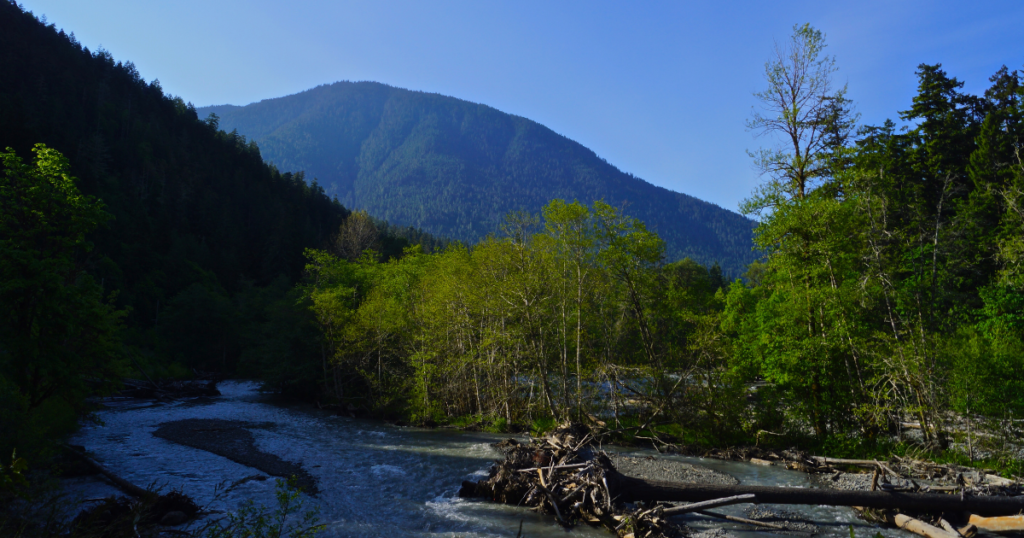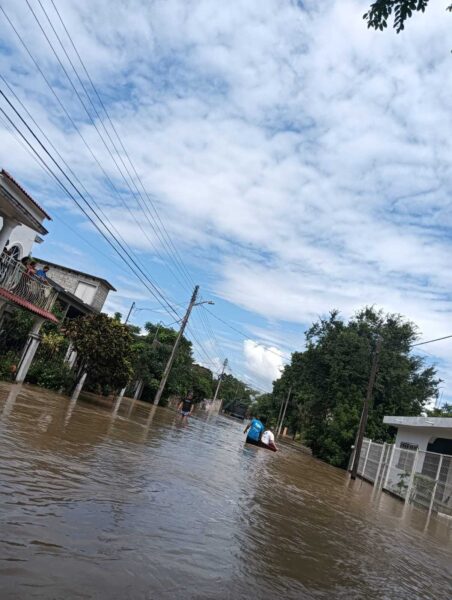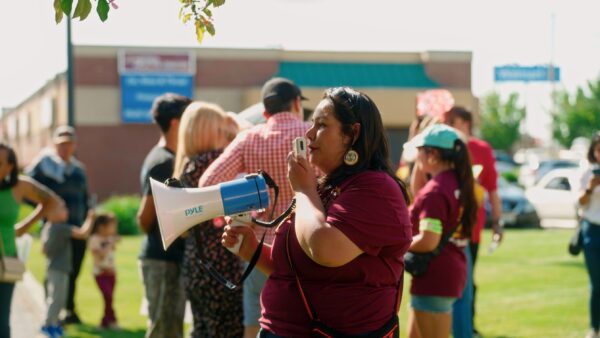
Before the lower and upper Elwha River dams were built, the Elwha River flowed from pristine forests on the Olympic Peninsula to the Strait of Juan de Fuca. Healthy salmon spawned in the Elwha River provided sustenance, cultural and spiritual value, and identity to the communities who depend on them, such as the Lower Elwha Klallam Tribe and other Salish Sea tribal communities.
When the dams were built between 1910 and 1927, it was illegal to block the passage of fish in the Washington Territory. However, dam supporters convinced the government and politicians to overlook the law, allow the dams to be built, and create hatcheries to replace the salmon. After the dams were built, and when the hatcheries ultimately failed a few years later, the Elwha River no longer provided a strong ancestral connection between the forests, waters, fish, orcas, and people that it once did. This was a violation of tribal treaty rights.
Ten years ago this fall, the biggest dam deconstruction anywhere in the world began in the Elwha River watershed on the Olympic Peninsula. By August 2014, the removal of the two dams was complete, and the majestic Elwha began a long, meandering journey to a restored and healed river.
The Elwha River dam removal was the culmination of two decades of persistent efforts and successful partnerships. Local, regional, and national stakeholders supported the Lower Elwha Klallam Tribe’s motion to stop the relicensing of the dams, arguing that the dams prevented the tribe’s ability to exercise their right to fish since the dams illegally blocked fish passage.
The Lower Elwha Klallam Tribe persistently lobbied Congress to meet the United States’ treaty obligations to the Tribe, as outlined in the 1855 Treaty of Point No Point. The Tribe had held up its side of the agreement, while the US government consistently failed to ensure the Tribe’s access to healthy salmon.
In 1986, when the license for the upper dam came up for renewal, an opportunity arose. The tribe filed a motion to intervene with the Federal Energy Regulatory Commission (FERC). They asked for relicensing to be denied and called for both dams to be taken down. With Lower Elwha Klallam tribe leading, environmental advocates joined the cause and brought the issue to the federal level.
A number of factors favored the case for dam removal. For one, the dams were illegal. Second, neither of the dams had a fish ladder, and, third, one of the dams was in Olympic National Park. Park boundaries expanded after the upper dam was built and the dam and its reservoir, Lake Mills, were now within park boundaries. The Department of the Interior, parent agency to the National Park Service, joined the Lower Elwha Klallam Tribe and environmental groups, claiming that FERC didn’t have jurisdiction in the national park.
In 1992, Congress issued a directive to implement actions necessary to achieve full restoration of the Elwha River and the native fisheries therein.
It took another 20 years before removal even began.
Resilience: Communities and salmon thrive when given the opportunity
The Elwha dam removal and subsequent ongoing river restoration effort were designed to bring this once dammed river back to life.
Salmon were blocked from most of their spawning habitat for more than a century. The two Lower Elwha dams that were built without fish passage not only blocked salmon migration, but also stopped the natural flow of sediment and wood that creates nutrient-rich side channels, healthy spawning beds, riffles, pools and log jams that salmon require.
Scientists have been tracking nature’s response and resiliency to a free flowing, undammed Elwha River — and they are documenting good news. Scientists have documented that salmon and nature respond instinctively to a restored, free flowing river when given the opportunity. It is in their DNA.
- Summer steelhead, nearly extinct in the Elwha, have come back to the river in strong numbers. Once locked up behind the dams, rainbow trout are again going out to sea as steelhead.
- Adult chinook returns to the river since dam removal are the highest since the late 1980s, with more than 7,600 estimated in the 2019 count. This is critically important for the highly endangered Southern Resident orca whose diet is 80% chinook salmon.
- The recent news of three pregnant orcas in J-pod is fabulous news. However, the dwindling availability of prey for orcas is one of the main limiting factors impacting their recovery and will determine the survival and health of the newborn calves.
Lower Snake River Dams
The Elwha River advocacy effort is not the first time that communities have called for dam removal to restore salmon runs. The story of the Elwha River flowing through the Olympic Peninsula shares a similar history as the Snake River in eastern Washington and Idaho.
While the Elwha River and the Lower Snake River are roughly 370 miles apart, with vastly different geographies, the two rivers share similarities. First, both rivers provided clean and cool water for generations of salmon to spawn. In addition, Southern Resident orcas relied on both Elwha and Snake River salmon to sustain them throughout the year and throughout their broad ranges. Finally, these abundant salmon runs provided year-round sources of food and cultural lifeways for tribes in both regions for millennia.
A divisive situation similar to what happened with the Elwha dam removal project has developed with congressional members over the removal of the lower Snake River dams in Southeastern Washington. Representative Mike Simpson (R-Idaho) has illustrated leadership with his support to find solutions that benefit all communities who are connected to the river, including solutions that prevent salmon extinction and consider the needs of tribes who depend on them. Unfortunately, several Members of Congress actively oppose Rep. Simpson’s proposal. Recently, groups opposed to solutions that include dam removal have spread misinformation among candidates for local elected office in eastern and central Washington in a bid to stop progress in the future.
Salmon are the spiritual and cultural icon of the Pacific Northwest and a critical component of the Northwest’s economy and ecology. Yet, Snake River salmon runs, once the most prolific in the entire Columbia River Basin, are now on the brink of extinction. The loss of salmon impacts the web of life, including salmon-loving, Southern Resident orcas. Moreover, the loss of salmon is an existential threat to Northwest Indigenous tribes who depend on salmon for their sustenance, cultures, and identities.
Scientists say removing four federal dams on the lower Snake River in eastern Washington must be part of any plan to recover Snake River salmon.
What’s next?
Last December, we joined the Our Northwest Opportunity Coalition because we believed in their efforts to support the largest salmon recovery in history–and honor tribal treaty rights, protecting orca populations, and invigorating the economy.
The primary solution we are advocating for through Our Northwest Opportunity to prevent extinction and restore salmon abundance is removing the four dams on the lower Snake River.
Native youth from 10 Northwest tribes have called on President Biden to remove dams on the lower Snake River to save salmon from extinction, and to uphold and protect Tribal treaty rights. We need to amplify and lend our support for this effort.
Please add your voice to join the chorus of support by signing their petition today.


